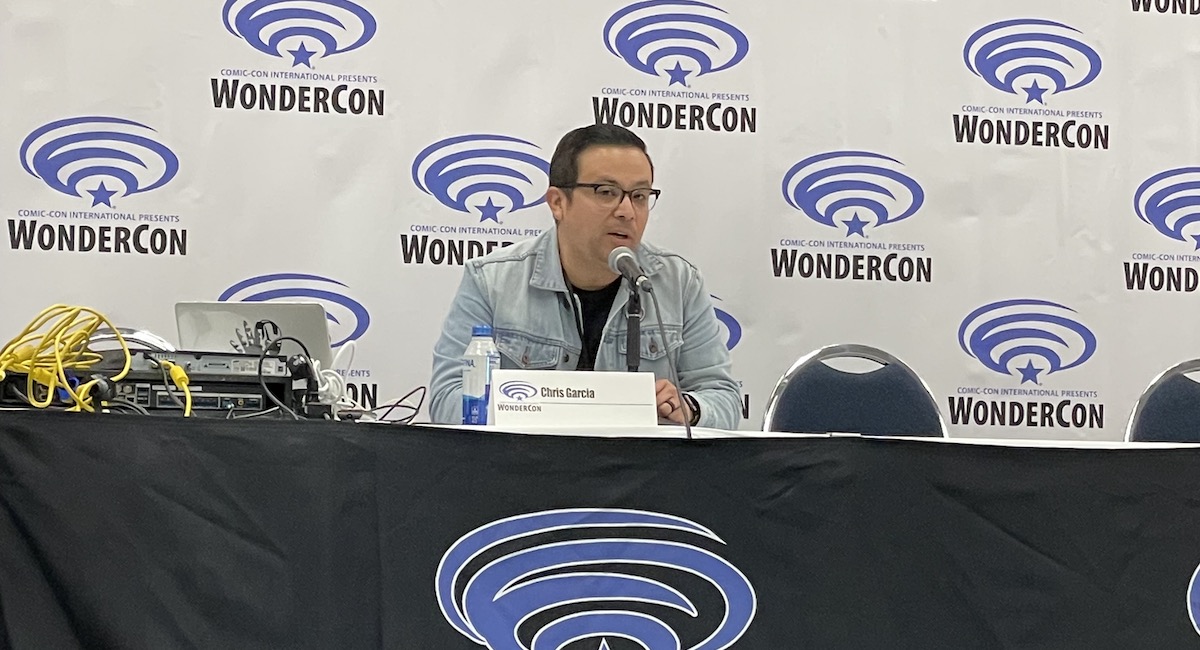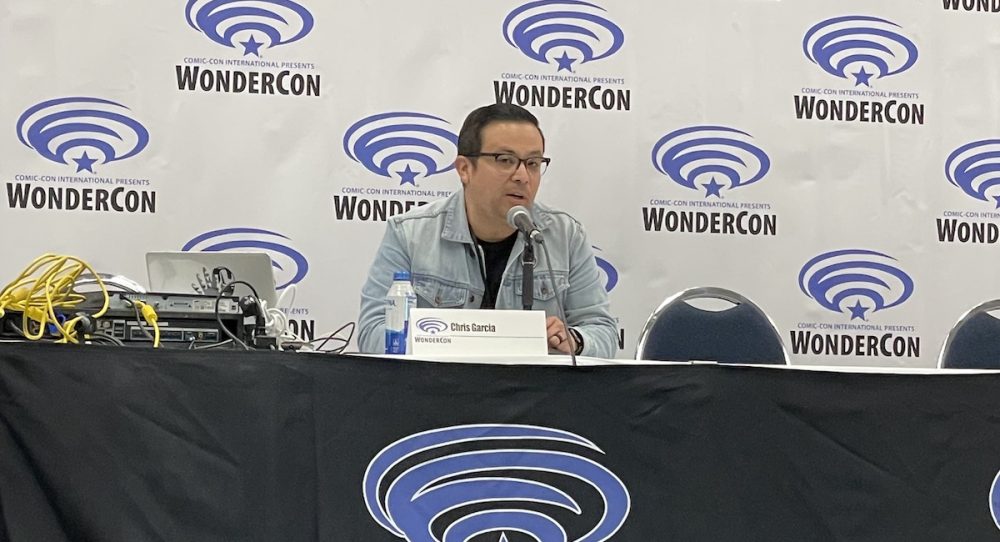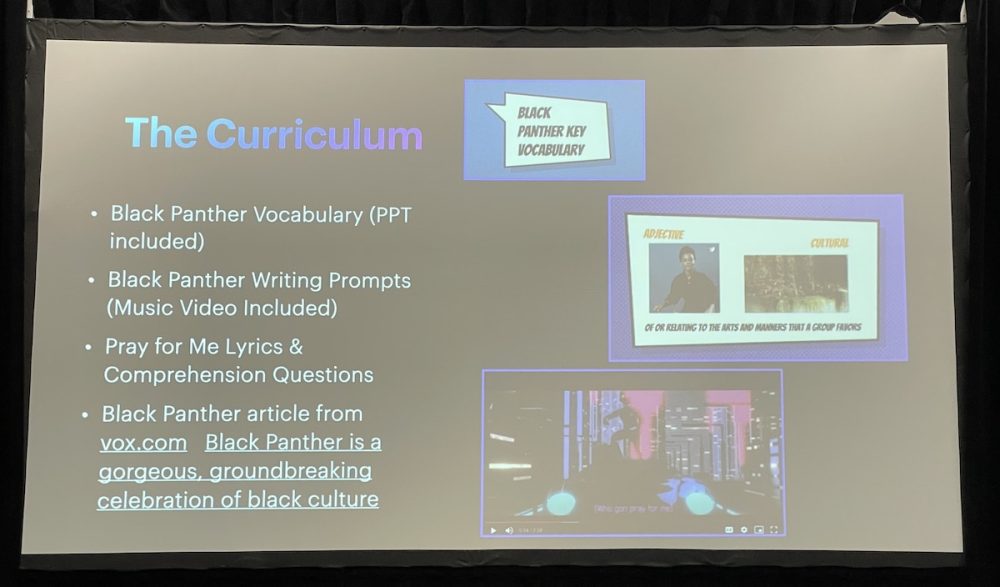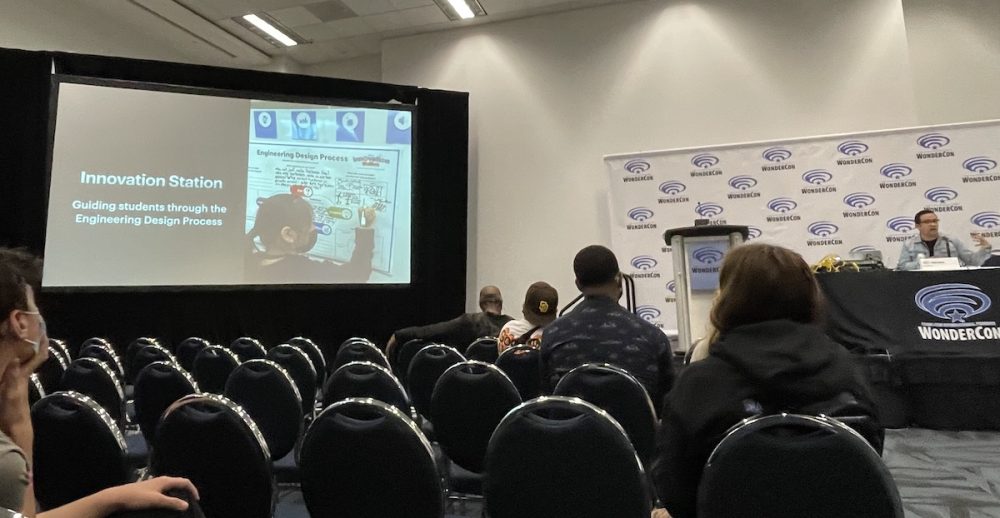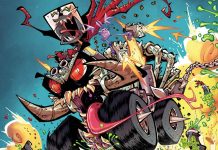By Joanne Saunders
Chris Garcia, an innovation resource teacher in the Chula Vista Elementary School District, shared how pop culture can be blended with pedagogy. STEAM is an educational approach to learning that uses Science, Technology, Engineering, the Arts, and Math to guide students’ critical thinking. A long-time comic book fan, Garcia believes using stories like Black Panther can help students consider and discuss issues about race, gender, and equality.
During the event, Garcia ran through the questions and processes of his 2020 case study of thirty 6th graders who attend a Title 1 school. 90% of the students were multi-language learners (speak and learn more than one language). 90% of the students were on a free lunch program or part of foster care. He received 100% parental support for the kids to watch the PG-13 Black Panther movie.
Many of his students were impressed by the diversity in Black Panther because they had been used to seeing white male superheroes. The strong women warriors and African American actors were a welcome change to the typical superhero story.
Garcia emphasized that multi-language learners need to be exposed and explained to new vocabulary. When students understand the vocabulary, they will better comprehend the ideas and can further develop those ideas into their own creative endeavors. Student motivation is also a critical factor. One student was not a strong writer but she could find resources to answer the prompts because her motivation was strong.
Some of the prompts he and his colleagues presented to the students during the study included:
“Who are the role models of Black Panther and what character strengths do they exhibit?”
“How is Black Panther an example of both racial and gender diversity compared to other superhero films?”
Garcia firmly believes questions are better than answers because they encourage deep thinking. Garcia also talked about the challenges of working with educators who have different methods of teaching. He gave a telling example of when a student came up with an idea to create a force field to contain the California wildfires, an idea the student derived from watching Black Panther.
“Go ahead and do this! That’s a great idea!” Garcia said to the student.
The other teacher disagreed, “That’s fake. It can never happen. Why would you encourage that?”
“No teacher has the right to throw down your idea,” he tells his students. “You are allowed to use whatever imaginary thought you have, and no one can tear it down.” Garcia explains to his students that their imagination is the limit, and technology will one day catch up to their imaginations.
Garcia also has created an Innovation Station for students, where he teaches the mechanics of technology like LED lighting projects. In these instances, his students learn vocabulary relating to engineering and design.
The highlight of Garcia’s career has been traveling to Kenya and working at an all-girls boarding school of 9th to 12th graders. In Kenya, public education is only free up to 8th grade. The boarding school takes girls from each tribe in Kenya and provides a scholarship for them to attend. His role there was to show teachers and students how to use mobile technologies in their classrooms. A lot of the students had not been exposed but he was impressed by how quickly the girls learned new technology. There was no Wi-Fi or electricity, but where there was a will to learn, there was a way.
Overall, Garcia found the study to be successful in that it opened the eyes of his students in a way that could not have been done with a standard hero film. The issues of diversity and gender in Black Panther contributed to their STEAM program of education.
Garcia is the SDCUE (San Diego Computer Using Educators) Board Vice President, an adjunct professor at the University of San Diego, and host of the Innovative Pedagogy Podcast.
Miss any of our previous WonderCon 2022 coverage? Click here!



